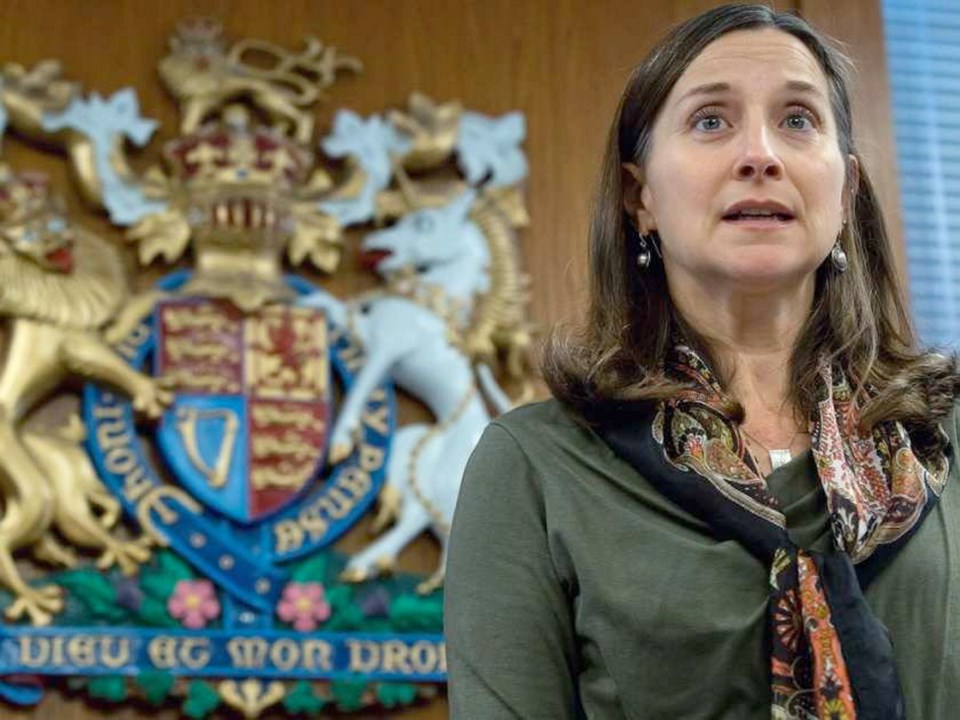The emergence of carfentanil might be behind a frightening spike in the number of illicit-drug overdose deaths in B.C., Provincial Health Officer Dr. Perry Kendall said Wednesday.
The latest statistics from the B.C. Coroners Service show 136 people — an average of 4.5 people every day — died of illicit-drug overdoses in April, the second-highest number of deaths in a single month in the province. That’s almost double the 69 people who died of drug overdoses in April 2016.
Carfentanil, a powerful synthetic opioid used to tranquillize elephants, is about 10,000 times more potent than morphine — and up to 100 times more potent than fentanyl.
From Jan. 1 to April 30, 488 people died from illicit-drug overdoses. More than half of those who died were between the ages of 30 and 49 years. Eighty per cent were men.
Most of the deaths took place indoors. Fifty-four per cent died in private residences, while close to 30 per cent died in hotels, motels, rooming houses and shelters. Five per cent died in public buildings and businesses. Close to 10 per cent of the deaths took place in cars and on sidewalks and in streets and parks.
No deaths occurred at Vancouver’s supervised consumption sites at InSite and the Dr. Peter Centre, or at any of the drug-overdose prevention sites.
“These were people who did not have anyone with them to administer naloxone or call 911,” said Kendall. “The lesson would seem to be: If you have someone around and they can administer naloxone until the emergency response can get there, your chances of surviving are much higher.”
Vancouver, Surrey and Victoria had the highest number of drug overdoses in the province during that four-month period. There were 144 deaths in Vancouver, 51 in Surrey and 37 in Victoria during that time.
Central and Northern Vancouver Island saw an increase of more than 50 per cent in illicit-drug deaths in the first four months of 2017, compared to the same time period in 2016.
Last year, after the province declared a public-health emergency to raise awareness of fentanyl’s deadly toll, the number of illicit-drug deaths slowly began to decrease, Kendall said.
“The numbers were high, but I thought we were actually getting a handle on it,” he said. “But in November, the numbers spiked. It almost doubled and it has kept at that high level since then.”
About that time, LifeLabs started finding carfentanil in the urine of people coming in for treatment, said Kendall. The RCMP and Health Canada toxicology labs also started finding carfentanil in drugs on the streets.
“A number of us think carfentanil started being imported, because you can import the equivalent number of doses for about one-hundredth of the volume. And when you get something that’s 100 times more potent than what you were dealing with, there’s a huge potential for overdosing,” said Kendall. “I think the drugs just became that more toxic. And we still have that high level of carfentanil being found in people’s urine. It’s appearing around the province.”
The NDP’s Selina Robinson, MLA for Coquitlam-Maillardville and a former counsellor, said the mounting death toll shows the province needs to do much more. But she said uncertainty around B.C.’s political future prevents the government from stepping up its response to the crisis.
“It needs some very special attention and here we are in this holding pattern and people are dying,” she said. “And I have to tell you how crazy that makes me.”
Premier Christy Clark and the B.C. Liberals remain in power following the May 9 election with 43 of 87 seats in the legislature compared to 41 for the NDP and three for the B.C. Green Party.
The NDP and Greens have agreed to work together to form a minority government with a slim 44-seat majority, but first they will have to defeat the Liberals whenever Clark recalls the house.
In the meantime, Robinson said the NDP and Greens are prevented from acting on their pledge to create a standalone ministry for mental health and addictions. She said a separate ministry will increase accountability and ensure there is always someone at the cabinet table fighting for the necessary resources. “Every day that we wait is another day lost to actually doing something.”
Sonia Furstenau of the B.C. Green Party noted that Clark has promised to recall the house this month. “That’s hopeful, because if we can move forward with a minority government, then it helps get things moving.”
More resources are critical, Kendall said, as is increasing access to drug treatments for opioid addiction such as suboxone and methadone. People who are resistant to treatment might need access to hydromorphone or Dilaudid. Those who are resistant to treatment and “very, very at risk” might need prescription heroin.
Dedicated funding would also be helpful, said Kendall, adding tens of millions of dollars are needed to broaden addiction treatment.
“But we also need to address the issue of stigma. A lot of the people using drugs alone are professionals, wage earners, family members, some of whom are hidden addicts,” he said.
Read the report on illicit-drug deaths at: http://bit.ly/1Sa08p4



